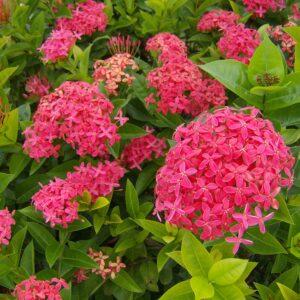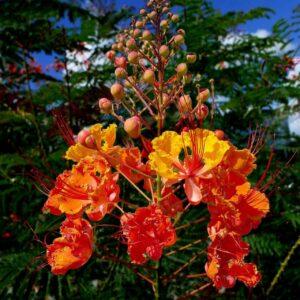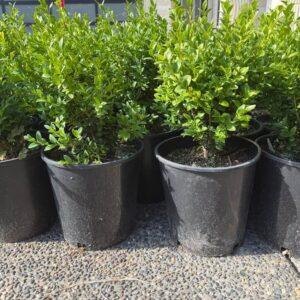Spara Grass (Asparagus Fern – Asparagus setaceus
The plant often referred to as Spara Grass is typically Asparagus Fern (Asparagus setaceus, A. densiflorus, or related species). Despite its common name, it’s not a true fern or grass, but a member of the asparagus family. Known for its soft, feathery, needle-like foliage, it makes an excellent ornamental houseplant, garden filler, or even a hanging basket plant.
This elegant plant thrives both indoors and outdoors (in mild climates) and is valued for its airy texture, easy-going nature, and fast growth. With just a little care, Spara Grass can remain lush and green all year long.
🌱 Botanical and Common Information
Botanical names: Asparagus setaceus, Asparagus densiflorus, Asparagus sprengeri
Common names: Spara Grass, Asparagus Fern, Foxtail Fern, Lace Fern, Plume Asparagus
Plant type: Herbaceous perennial (often grown as an ornamental)
Growth habit: Clumping, trailing, or bushy depending on species
Height: 1–3 feet (30–90 cm)
Spread: 2–4 feet (60–120 cm)
Foliage: Fine, fern-like leaves; soft to touch
Flowers/Fruits: Tiny white flowers followed by small green berries that ripen to red (toxic if ingested)
💧 Watering Routine
Spara Grass prefers consistently moist but not soggy soil.
Spring–summer (growing season):
Water once or twice per week, depending on climate.
Let the top 1 inch of soil dry between waterings.
Autumn–winter (dormant season):
Reduce watering to every 10–14 days.
Do not let the soil completely dry out for long periods.
🪴 Container tip: Ensure your pot has good drainage to prevent root rot.
Signs of underwatering: Yellowing or shedding leaves.
Signs of overwatering: Drooping stems, soggy soil, root rot.
☀️ Light and Temperature Needs
Light:
Prefers bright, indirect sunlight.
Can tolerate partial shade, especially outdoors.
Too much direct sun may scorch the fine leaves; too little causes leggy growth.
Temperature:
Ideal range: 18–27°C (65–80°F)
Minimum: 10°C (50°F)
Sensitive to frost and cold drafts.
🪟 Indoors: Place near an east or west-facing window with filtered sunlight.
🌳 Outdoors: Grow under light tree cover or partial shade.
🌿 Soil and Fertilizer
Soil: Use a well-draining potting mix rich in organic matter.
Blend: 2 parts potting soil + 1 part peat or cocopeat + 1 part perlite/sand.
pH: Slightly acidic to neutral (6.0–7.0)
Fertilizer:
During growing season (spring to early autumn):
Use a balanced liquid fertilizer every 4–6 weeks.
Optional: Use compost or worm castings for organic feeding.
Reduce or stop feeding in winter when growth slows.
⚠️ Avoid over-fertilizing—can cause leaf burn and chemical buildup in soil.
✂️ Pruning and Maintenance
Trim yellowing or dead stems at the base regularly.
Light pruning helps maintain bushy, compact shape.
Remove old stems in early spring to promote fresh growth.
Wipe leaves gently with a damp cloth to remove dust.
🪴 Repotting: Every 2–3 years, or when roots become crowded.
🌱 Propagation Methods
Division (Best method):
Gently divide root clumps when repotting.
Each section should have a healthy stem and root ball.
Replant in fresh soil and water lightly.
Seeds:
Harvest ripe red berries and remove pulp.
Sow in moist, warm soil and keep covered.
Germination can take several weeks and requires patience.
🐛 Pests and Problems
Spara Grass is generally pest-resistant, but watch out for:
Spider mites
Mealybugs
Scale insects
🛡️ Treat with neem oil or insecticidal soap.
Avoid dry air (which encourages spider mites)—increase humidity if indoors.
⚠️ Toxicity Warning
Toxic to pets and humans if berries are ingested.
May cause vomiting, diarrhea, or stomach discomfort.
Keep out of reach of children and animals.
🎍 Styling and Placement Tips
Great in hanging baskets where its soft foliage can spill over.
Beautiful as a companion plant in shaded garden beds.
Adds soft texture to office spaces, bathrooms, or kitchens with filtered light.
Pairs well with pothos, ferns, and calatheas.
✅ Conclusion
Spara Grass (Asparagus Fern) is a timeless, attractive houseplant that adds a lush, graceful presence indoors or outdoors. With minimal care—moderate watering, light feeding, and filtered sun—it thrives and even multiplies over time. Whether grown in pots or hanging baskets, this feathery beauty makes a reliable green companion for any gardener.”





Reviews
There are no reviews yet.